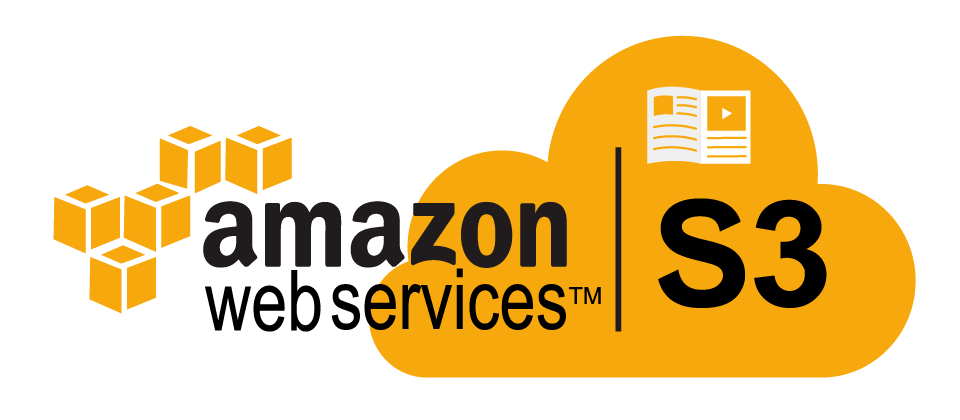Amazon Simple Storage Service (Amazon S3)
 Bhupendra
Bhupendra

In object storage, each object consists of data, metadata, and a key.
The data might be an image, video, text document, or any other type of file. Metadata contains information about what the data is, how it is used, the object size, and so on. An object’s key is its unique identifier.
Recall that when you modify a file in block storage, only the pieces that are changed are updated. When a file in object storage is modified, the entire object is updated.
Amazon Simple Storage Service (Amazon S3) is a service that provides object-level storage. Amazon S3 stores data as objects in buckets.
You can upload any type of file to Amazon S3, such as images, videos, text files, and so on. For example, you might use Amazon S3 to store backup files, media files for a website, or archived documents. Amazon S3 offers unlimited storage space. The maximum file size for an object in Amazon S3 is 5 TB.
When you upload a file to Amazon S3, you can set permissions to control visibility and access to it. You can also use the Amazon S3 versioning feature to track changes to your objects over time.
Amazon S3 storage classes
With Amazon S3, you pay only for what you use. You can choose from a range of storage classes to select a fit for your business and cost needs. When selecting an Amazon S3 storage class, consider these two factors:
How often you plan to retrieve your data
How available you need your data to be
S3 Standard
Designed for frequently accessed data
Stores data in a minimum of three Availability Zones
Amazon S3 Standard provides high availability for objects. This makes it a good choice for a wide range of use cases, such as websites, content distribution, and data analytics. Amazon S3 Standard has a higher cost than other storage classes intended for infrequently accessed data and archival storage.
S3 Standard - Infrequent Access
Ideal for infrequently accessed data
Similar to Amazon S3 Standard but has a lower storage price and higher retrieval price
Amazon S3 Standard-IA is ideal for data infrequently accessed but requires high availability when needed. Both Amazon S3 Standard and Amazon S3 Standard-IA store data in a minimum of three Availability Zones. Amazon S3 Standard-IA provides the same level of availability as Amazon S3 Standard but with a lower storage price and a higher retrieval price.
S3 Standard One Zone-IA
Stores data in a single Availability Zone
Has a lower storage price than Amazon S3 Standard-IA
Compared to S3 Standard and S3 Standard-IA, which store data in a minimum of three Availability Zones, S3 One Zone-IA stores data in a single Availability Zone. This makes it a good storage class to consider if the following conditions apply:
You want to save costs on storage.
You can easily reproduce your data in the event of an Availability Zone failure.
S3 Intelligent-Tiering
Ideal for data with unknown or changing access patterns
Requires a small monthly monitoring and automation fee per object
In the S3 Intelligent-Tiering storage class, Amazon S3 monitors objects’ access patterns. If you haven’t accessed an object for 30 consecutive days, Amazon S3 automatically moves it to the infrequent access tier, S3 Standard-IA. If you access an object in the infrequent access tier, Amazon S3 automatically moves it to the frequent access tier, S3 Standard.
S3 Glacier Instant Retrieval
Works well for archived data that requires immediate access
Can retrieve objects within a few milliseconds
When you decide between the options for archival storage, consider how quickly you must retrieve the archived objects. You can retrieve objects stored in the S3 Glacier Instant Retrieval storage class within milliseconds, with the same performance as S3 Standard.
S3 Glacier Flexible Retrieval
Low-cost storage designed for data archiving
Able to retrieve objects within a few minutes to hours
S3 Glacier Flexible Retrieval is a low-cost storage class that is ideal for data archiving. For example, you might use this storage class to store archived customer records or older photos and video files. You can retrieve your data from S3 Glacier Flexible Retrieval from 1 minute to 12 hours.
S3 Glacier Deep Archive
Lowest-cost object storage class ideal for archiving
Able to retrieve objects within 12 hours
S3 Deep Archive supports long-term retention and digital preservation for data that might be accessed once or twice in a year. This storage class is the lowest-cost storage in the AWS Cloud, with data retrieval from 12 to 48 hours. All objects from this storage class are replicated and stored across at least three geographically dispersed Availability Zones.
S3 Outposts
Creates S3 buckets on Amazon S3 Outposts
Makes it easier to retrieve, store, and access data on AWS Outposts
Amazon S3 Outposts delivers object storage to your on-premises AWS Outposts environment. Amazon S3 Outposts is designed to store data durably and redundantly across multiple devices and servers on your Outposts. It works well for workloads with local data residency requirements that must satisfy demanding performance needs by keeping data close to on-premises applications.
Question
You want to store data that is infrequently accessed but must be immediately available when needed. Which Amazon S3 storage class should you use?
Options :
S3 Intelligent-Tiering
S3 Glacier Deep Archive
S3 Standard-IA
S3 Glacier Flexible Retrieval
Write down your answers in the comment section.
Happy Learninge 😊
Subscribe to my newsletter
Read articles from Bhupendra directly inside your inbox. Subscribe to the newsletter, and don't miss out.
Written by

Bhupendra
Bhupendra
I'm a passionate software developer with a strong foundation in JavaScript, TypeScript, Node.js, and React. I've honed my skills in full-stack development and building scalable, user-friendly applications. I'm driven by creating innovative solutions that solve real-world problems and enhance user experiences. I'm a quick learner, constantly updating myself with the latest industry trends and best practices. Beyond technical skills, I value collaboration, problem-solving, and maintaining a growth mindset. I'm excited to contribute my expertise to a dynamic team and make a positive impact through technology.